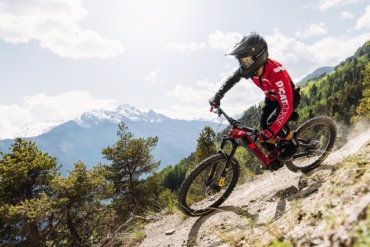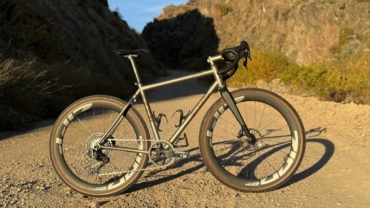We’re living through a golden age of gear specialization. The days of blacksmiths and vagabond climbers fabricating gear from scratch are in the rearview. We’re now in an era where big-box stores create cheap imitations of those same pieces of gear, and googling “best mountain bike shoes” yields a staggering amount of results.
There is always going to be a strain of innovators dreaming up new inventions and redefining the status quo, pushing the outdoor industry forward. Particularly in the areas of sustainable technologies, it’s a necessary charge for both people and the planet.
But if you’re looking for gear for any idiosyncratic outdoor activity, chances are it exists. I submit, as an example, the sheer amount of tread combinations on gravel-specific tires or the available lumen ranges for headlamps.
I love all of this. As someone with a gear problem (read, obsession), I spend more time scrolling tech specs than I’m comfortable admitting in public. But I’m also a father of two who shares storage space and a budget with larger family priorities. And something has to give.
In short: Some trail running shoes with potential modifications can make for perfectly good mountain bike shoes, eliminating yet another piece of specialized gear that you need to obtain and maintain. Here’s how.
Too Much Specialization in the Outdoors

Gearing up for a new outdoor pursuit can feel overwhelming. When walking down the various aisles of REI or shopping the digital realms, a paradox of choice unfolds before you. The proliferation of sport-specific gear is a wonderful thing for obsessives and adrenaline acolytes, but it can feel like an insurmountable barrier of entry to those just starting out.
Recently, I’ve been trying to simplify — and sections of the industry are, too. The inevitable backlash to the world of the hyper-specific is the hyper-general: one piece of gear to rule them all.
The recent popularity of an all-terrain bike, or ATB, fits this niche. The ATB is something that can serve as a daily commuter, tourer, and single-track shredder. Sure, there are performance trade-offs in each realm, but proponents (including myself) argue the sheer joy of being able to do whatever you want, whenever you want, vastly eclipses that.
I’ve come to view my trail runners as the same: an all-terrain, all-activity shoe capable of impressive performance across every aspect of outdoor recreation.
The Solution

For me, it started as a budget issue. My wife and I lived in Flagstaff in an apartment barely large enough to hold our bikes. I was in grad school and making the wages you associate with grad school, and we were expecting our first child.
Flagstaff’s and neighboring Sedona’s vast expanse of singletrack was a sight above my Midwestern-honed mountain biking skills. I’d happily run clipless pedals through Michigan’s root-filled trails. But Northern Arizona’s rocks, technicality, and elevation, coupled with my spotty health insurance, required me to switch to flats.
I couldn’t justify buying another shoe, so I turned to the trail runners already in my closet. I figured even if they didn’t work, the hike-a-bikes would be more comfortable. And I haven’t looked back since.
For me, trail runners provide 80% or more of a mountain bike shoe functionality while expanding your range of possible activities and simplifying life. I trade out some biking features — namely, toe protection and stiffness — but gain a lion’s share of comfort and versatility.
What Kind of Trail Runners Work as Mountain Bike Shoes?

Not every trail runner will work for this kind of cross-activity application. Even the term “trail runners” conjures up different images, from minimalist-style barefoot runners to maximalist style, running-on-a-marshmallow-style cushioning. For the shoe to cross over well into a mountain bike application, you’ll want to look at three things: drop, lugs, and lacing.
Look for a show with a lower drop (think >10mm) to optimize your foot position on the pedal. A nonaggressive lug depth (~4mm is a good starting point) will allow for hiking traction but not feel overly clunky on the bike, as will a neutral support shoe rather than a maximalist comfort model (sorry, HOKA fans).
Pay attention to the toebox protection as well. Trail runners will have less toe protection than purpose-built mountain bike shoes, but designers expect some degree of dirt and gravel. And while traditional lacing works, an alternate lacing method or BOA system is preferable for adjustments on the fly.
I was lucky that my go-to Salomon Sense Rides were perhaps the platonic ideal of a mountain bike-capable trail runner. They’re lightweight, have a minimal drop, capable but not aggressive lugs, and the added bonus of the Quicklace system, which won’t become untied or tangled up in the bike.
The recent integration of BOA systems into trail running works well here. Something like La Sportiva’s Jackal BOA II allows for that quick adjustment and security of the BOA system. And it has the added benefit of an ankle-high dust shield to ward off the inevitable dirt and debris from sullying your socks.
But before going out and buying something brand new, take a look in your closet. Can you make something work? I’ve seen riders out on the trail rocking the popular Adidas Samba, nominally an indoor soccer shoe, for the same reason: it works for both their life and their hobbies.
Performance-Enhancing Accessories

All that being said, sometimes the heart — or foot — craves the performance enhancement of a carbon shank. I recently added Superfeet’s Carbon Insole to my trail runners as a bike shoe setup, and it bridged the gap between bike shoe performance and running-specific comfort.
The carbon support is in the rear of the insole, so it helps, rather than hinders, the shoe’s running performance. And on climbs and out-of-the-saddle efforts, the carbon insole made a big difference. It won’t pedal up the hill for you, but you’ll feel the familiar power transfer feedback you’re used to from cycling shoes.
Also, don’t neglect your socks. John Wooden’s famous first lesson to his collegiate basketball athletes was how to put your sock on properly. It all starts with the socks.
I’ve been using Smartwool’s Zero Cushion Bike Socks for every ride recently. The Merino is durable and hearty, without sweating your feet out, and they function well off the bike, too — they’ve become my go-to running sock. I know, a little backward, trail runners for riding and bike socks for running. But when you find something that works, stick with it.
Do You Really Need Mountain Bike Shoes?
There are obviously benefits to a mountain bike-specific shoe. And if mountain biking is your main form of recreation, using trail runners probably isn’t for you. Invest in what you’re going to use — that’s at the heart of ethical consumption.
But these days, it can feel like you need a new line of income for every new outdoor pursuit. If that has you feeling overwhelmed or leaves your budget stretched, the solution may already be in your closet.








